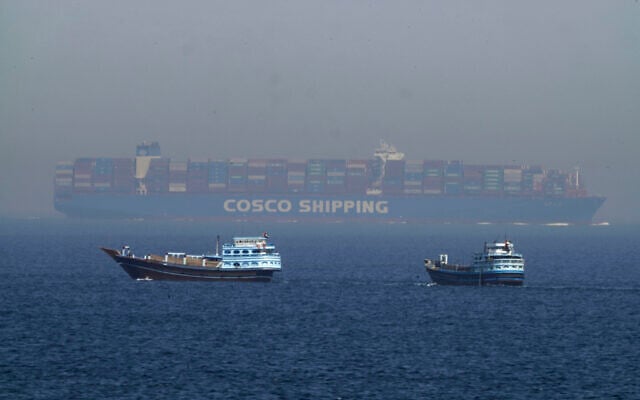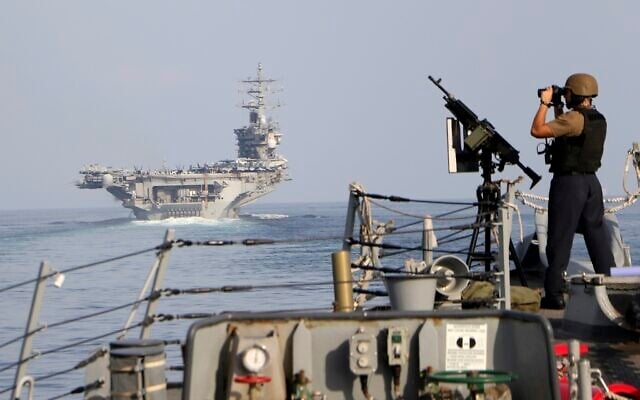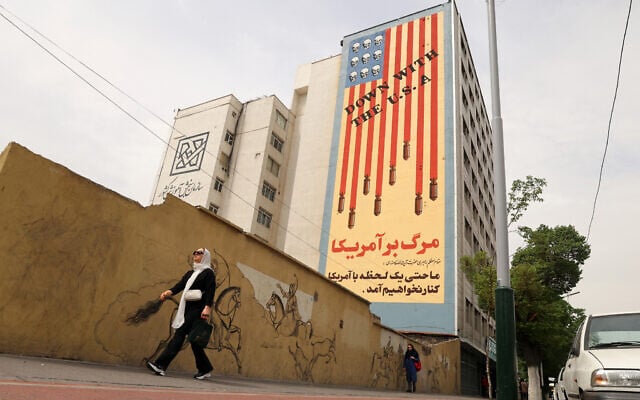Explainer
Tehran might block the Strait of Hormuz, leave the Nuclear Non-Proliferation Treaty, or recruit its proxies for terror attacks abroad — but such actions would also risk US anger
DUBAI, United Arab Emirates — As Israel pounds Iran with airstrikes targeting military facilities and nuclear sites, officials in Tehran have proposed a variety of steps the Islamic Republic could take outside of launching retaliatory missile barrages.
Those proposals mirror those previously floated by Iran in confrontations with either Israel or the United States in the last few decades.
They included disrupting maritime shipping through the Strait of Hormuz, leaving the Nuclear Non-proliferation Treaty, and directing attacks by terrorists abroad.
Here’s a look at what those options could mean — both to Iran and the wider Middle East.
Targeting the Strait of Hormuz
The Strait of Hormuz is the narrow mouth of the Persian Gulf, through which some 20% of all oil traded globally passes.
Get The Times of Israel's Daily Edition by email and never miss our top stories
By signing up, you agree to the terms
The strait is in the territorial waters of Iran and Oman, which at its narrowest point is 33 kilometers (21 miles) wide. The width of the shipping lane in either direction is only 3 kilometers (2 miles).
Two traditional dhows sail by a large container ship in the Strait of Hormuz Friday, May 19, 2023. (AP Photo/Jon Gambrell)
Anything affecting it ripples through global energy markets, potentially raising the price of crude oil. That then trickles down to consumers through what they pay for gasoline and other oil products.
There has been a wave of attacks on ships attributed to Iran since 2019, following US President Donald Trump’s decision to unilaterally withdraw the US from the 2015 Iran nuclear deal and reimpose crushing sanctions on Tehran.
US forces routinely travel through the strait, despite sometimes-tense encounters with Iran’s Revolutionary Guard, a paramilitary force answerable only to Supreme Leader Ayatollah Ali Khamenei.
The US Navy’s Bahrain-based 5th Fleet conducts those operations, known as freedom of navigation missions, to ensure the waterway remains open to business. Iran views those passages as challenging its sovereignty — as if it operated off the coast of the US.
Since the Israeli attacks began, Iranian officials have repeatedly raised blocking the strait — which likely would draw an immediate American response.
The aircraft carrier USS Dwight D. Eisenhower and other warships crosses the Strait of Hormuz into the Persian Gulf on November 26, 2023, as part of a wider American deployment in the Middle East amid the Israel-Hamas war. (Information Technician Second Class Ruskin Naval/US Navy via AP)
Withdrawal from Nuclear Nonproliferation Treaty
Experts fear Tehran could respond to the strike by deciding to fully end its cooperation with the International Atomic Energy Agency, abandon the Nuclear Nonproliferation Treaty and rush toward a bomb.
As a member of the treaty, Iran is obligated to explain any radioactive traces outside of declared sites and to provide assurances that they are not being used as part of a nuclear weapons program.
Iran insists that its nuclear program is peaceful, although it has been enriching uranium to levels that have no peaceful application, has obstructed international inspectors from checking its nuclear facilities, and has greatly expanded its ballistic missile capabilities. Israel says Iran was covertly taking active steps to move toward construction of a bomb.
There is precedent for concern: North Korea said it withdrew from the treaty in 2003 and tested a nuclear weapon in 2006.
However, again, if Iran withdrew from the treaty, it could draw the US into the fight, something Tehran so far has been seeking to avoid.
Women walk near a building bearing an anti-US mural with the slogan “Down with the USA” and skulls replacing the stars on the US flag, on Tehran’s Karim Khan Zand avenue on April 26, 2025. (ATTA KENARE / AFP)
Asymmetric attacks by terror groups
Iran could encourage its terror proxies to carry out more attacks, targeting Jewish tourists, synagogues, or Israeli diplomatic missions, as it has done in the past. However, it’s been a rough few years for those forces, which Iran has long used as both an asymmetrical way to attack Israel and as a shield against a direct assault.
Iran’s regional proxies, the self-described “Axis of Resistance,” have been severely hurt by ongoing Israeli attacks since the October 7, 2023, Hamas attack on Israel, particularly Lebanon’s Hezbollah and Hamas in the Gaza Strip.
Iraqi groups backed by Iran so far haven’t gotten involved, leaving Yemen’s Houthi rebels as the only member of the axis to launch attacks on Israel since its campaign against Iran began, as they were doing beforehand. But the Houthis have so far not intensified their attacks.
Times of Israel staff contributed to this report.
Is our live war coverage important to you?
Are you relying on The Times of Israel for accurate and timely coverage of the Israel-Iran conflict right now? If so, please join The Times of Israel Community. For as little as $6/month, you will:
- Support our independent journalists who are working around the clock to cover this war;
- Read ToI with a clear, ads-free experience on our site, apps and emails; and
- Gain access to exclusive content shared only with the ToI Community, including weekly letters from founding editor David Horovitz.
Join the Times of Israel Community Join our Community Already a member? Sign in to stop seeing this
If you’d like to comment, join
The Times of Israel Community.


